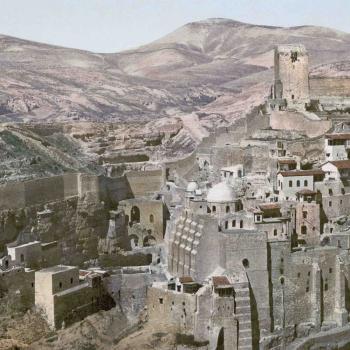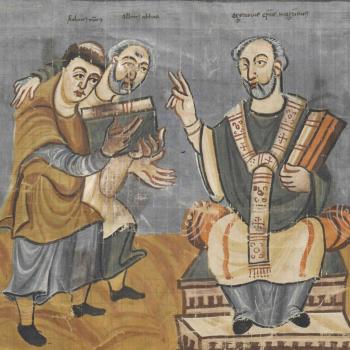Recently, I have been posting on fringe and mainstream ideas in scholarship, and have identified a number of working principles. Today I am going to illustrate these themes through one particular religious text, namely the Book of Mormon. This story also has lessons for mainstream Christians, who to varying degrees also have to face the dilemma of how they teach or preach scriptures that are hard to support as literally historical.
I have a lot of sympathy for Mormonism and the LDS tradition, for multiple reasons. So many of their ideas and principles appeal to me, and my personal dealings with Mormons have been overwhelmingly positive. The church’s phenomenal social ministries fill me with awe. As to whether the church was founded by an authentic prophet: with all humility, I say, God knows. On the academic side of things, if you don’t know Mormon history, you are missing a huge amount of American religious history. If a member of my family announced an intention to join the LDS church, I would disagree with their decision, but I would wish them all success.
But here’s the problem. If I look at the Book of Mormon as a historical text, as opposed to a spiritual document, it is simply not factually correct in any particular. In some controversial exchanges, I have been surprised to find how many clearly educated and literate Mormons think that the work can be defended as a work of history and archaeology. It can’t. The reason mainstream historians and scholars do not point out that fact more often is either that they are unaware of the book’s claims, or that they simply see no need to waste time on something so blatantly fictitious. This really is not debatable.
Let me begin with a basic principle of using evidence. I have no obligation to disprove the Book of Mormon, or indeed any religious text, because logically, nobody can prove a negative. I do not need to pick through the book and highlight every anachronism or error, sparking trench warfare with apologists who have built up elaborate defenses against every charge and cavil. Rather, it is up to anyone who believes in that Book to justify its authenticity, by producing positive arguments in its favor. If you are basing statements on the evidence of mystical gold plates that are not available for scholarly examination because they were taken up to Heaven, then you are making utterly extraordinary claims that demand extraordinary evidence. I am open to the concept of miracle, but the burden of proof clearly rests with the person making the claims.
Let me draw an important distinction here. The LDS church obviously believes in the historicity of the Book of Mormon, but today, that does not feature prominently in their public statements or materials. To find the aggressive and really outlandish defenses of the Book and its literal historicity, you have to go to one of the several free-standing apologist groups, which have a very strong Internet presence, and produce a quite astonishing body of convincing-looking materials.
The story closely reflects trends in other areas of American religion. Although many Mormons had long hoped to find support for “scriptural archaeology,” a new trend began in 1979-1980, at exactly the same time that conservatives were on the upswing in other denominations, including the Southern Baptists. A new generation of Mormon scholars tried to use more sophisticated archaeological and historical methods to support the apologist cause – in my view, with a total lack of success. The relationship of the official church to the more literal-minded apologists is long and controversial. You can get a sense of the whole saga by tracing the history of the Foundation for Ancient Research and Mormon Studies (FARMS), which over the past decade has been subsumed into the highly respectable Maxwell Institute at Brigham Young University.
The apologists make what they believe to be the best case for the Book, and I will show why it does not begin to stand up.
While I say little here about any alleged events that the Book reports as having taken place in Palestine, I have a great deal to say about the extensive stories set in the New World. Most of the Book of Mormon is set in these continents, which were reportedly the setting for mighty kingdoms and empires over several centuries. That conflicts starkly with the received mainstream opinion, which holds that there was no migration whatever from the Middle East to the Americas in pre-Columbian times. That mainstream view is, or should be, easily falsified, in the sense that it could be overturned overnight by just one reliably dated find of extraneous Middle Eastern goods or possessions in the New World, in an unquestionably ancient context.
New World archaeology is a rich and flourishing academic field, as sophisticated in its methodologies as that in any part of the world. Scholars have ranged widely over both continents, and read widely in the texts of particular areas. They have done a magnificent job of finding and interrogating sites that do not depend on the survival of stone remains. After nearly two centuries, though, nobody has ever produced a single site, object, or document that in any way supports any single line of the Book of Mormon. To use a phrase I coined in a recent post, there is no candidate for a “Monte Verde” site that overthrows existing paradigms, and demands us to take the Book seriously as historical truth (Need I add again – as history, as apart from religious truth).
In 1972, esteemed Meso-American archaeologist Michael Coe gave his opinion that “The bare facts of the matter are that nothing, absolutely nothing, has ever shown up in any New World excavation which would suggest to a dispassionate observer that the Book of Mormon, as claimed by Joseph Smith, is a historical document relating to the history of early migrants to our hemisphere.” We are now forty years on from that statement, with vastly more evidence at our disposal, not least the translation of extensive Maya texts and inscriptions. The last twenty years, indeed, have been a Golden Age of New World archaeology. Nothing, though, has come to light to change Coe’s assessment.
Let me give a specific. We have a really excellent idea of what the material culture of the Middle East looked like around, say, 1500BC or 500BC, or 200BC, whichever point you like around that era. If there had been a population movement of any sort to the Americas, that assemblage would be reproduced in whole or in part, and there would be inscriptions. Where are they in the New World? Where is one single example?
To cite a close comparison, look at how archaeology has validated claims that Phoenician peoples from the Levant colonized North Africa and the Western Mediterranean, and incidentally at just the same time of the supposed Book of Mormon settlements. The Phoenician/Carthaginian evidence is concrete, massive, and undeniable.
To return to the New World, these thriving archaeological disciplines are also supported by very substantial scholarship in linguistics and, more recently, genetics. No scholar working in those fields has ever found any reason to treat seriously any claims whatever made in the Book of Mormon, leave alone claimed to find any substantiation. Where those claims can be tested – for instance, in genetic linkages with Middle Eastern populations – they have fallen flat. (Before citing claims about Middle Eastern genetic patterns in the Americas, you might want to review the story of the Mal’ta finds here, or the summary from Nature here. I don’t have a paid subscription to Nature, and I assume most readers here won’t either).
It is not the case that there are a few or a handful of such remains or clues that pose nagging questions for mainstream archaeologists. There are none whatever. It’s not a case of “there’s no smoke without fire.” There isn’t even smoke.
I offer a question. Can anyone cite any single credible fact, object, site, or inscription from the New World that supports any one story found in the Book of Mormon? One sherd of pottery? One tool of bronze or iron? One carved stone? One piece of genetic data? And by credible, I mean drawn from a reputable scholarly study, an academic book or refereed journal, not some cranky piece of pseudo-science.
Or, to reframe the question. Does the Book of Mormon contain a statement or idea about the New World that Joseph Smith could not have known at the time, but which has subsequently been validated by archaeological or historical research?
Trying to explain the lack of archaeological corroboration, modern apologists argue that the Book’s settings are in a part of the Americas not yet investigated by science, but I have no idea where that extremely large unexplored region must be. One convenient defense of at least some apologists is that the doings in the Book of Mormon need only have taken place in a small area, some odd corner of Central America (say), rather than being spread over the continent. That contradicts the claims of other defenders of the Book, who see Middle Eastern influences all over the place, including for instance among the Olmecs. It also demands some explanation as to how those “localized” immigrant tribes found their way to upstate New York to fight in the Battle of Cumorah. Upper New York state is a very well investigated region that assuredly has not produced any evidence of ancient civilizations of the kind Smith imagined.
As I say, though, it is not my responsibility to come up with the coordinates of such a lost Mormonia. Advocates must identify it themselves, and suggest why archaeologists have failed to explore it to their satisfaction. (More on that topic tomorrow).
We might compare the world described in the New Testament. Archaeology and history cannot substantiate the details of Christ’s ministry, or the supernatural claims surrounding him. But they provide indisputable evidence that a society of that general kind existed in Palestine and the Levant around that time, speaking those languages and following those cultural and religious practices. In order to falsify that story, you would have to discard how many tens of thousands of objects, archaeological digs, inscriptions, and historical texts. You can’t dig a hole in Jerusalem without finding something to indicate that something like the world portrayed in the Bible existed there thousands of years ago.
The contrast with the Mormon scenario is evident.
Despite those fatal historical problems, Mormonism will survive and grow, and even to boom. Shortly, I will suggest what that implies for the relationship between religion and history.
















